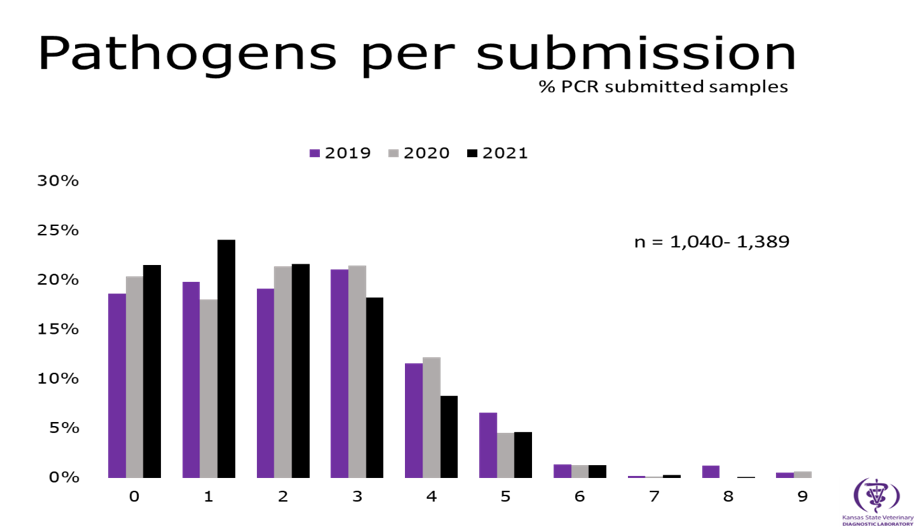
September 2022
Bovine Respiratory Panel Results
The respiratory PCR panel is a great tool to investigate the involvement of viruses in respiratory outbreaks. Deep pharyngeal swabs can be collected from random animals in the group and pooled in groups of five. This allows the practitioner to economically test more animals to detect any virus that may be present. The number of pools does depend on the group size and the estimated number of animals infected.
For example: in a group of 100 animals an estimated 20% is infected, two pools of five will provide 90% confidence that a particular virus will be detected. If 30% are infected, this sampling plan will provide 95% confidence.
The vaccine history should be considered. Nasal vaccine strains may result in a positive test if administered in the previous 10-14 days. If there is a question to whether the virus found is vaccine or field exposure, KSVDL can genetically compare the virus found with all vaccine strains for determination.
Pooling can be completed at the time of collection. Place five swabs in a sterile red top tube and place just enough sterile saline to cover the swab. Do not add more saline or swabs, as this will dilute the sample.
Please remember cotton tipped and/or wooden shaft swabs are not acceptable for PCR testing.
 |
 |